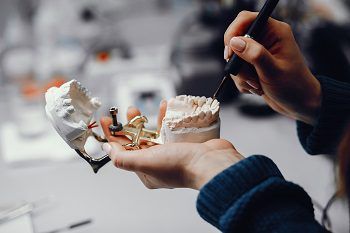How Do Periodontal Treatments Work?
Surgical or non-surgical treatment methods cure periodontal diseases. The chosen method depends upon the severity of the disease and patients' health conditions. The procedure prevents tooth loss, eliminates bacterial infection, reduces gum gaps between the teeth, restores damaged bones and tissues, and reshapes the jaw bone. In this article, we will discuss the working principles of periodontal treatments. Before then, let's learn about periodontal diseases types and treatment options.
Types of Periodontal Diseases
There are two basic types of periodontal diseases; name:
- Gingivitis
- Periodontitis
Gingivitis is a mild form of gum disease in which the gums get swollen, become tender or red, and bleed easily. This phase is easily reversible if caught well on time. The other type i.e., periodontitis, lets the bacteria or plaque accumulate below the gum line. And this leads to a chronic inflammatory response in the body to emerge. The advanced periodontitis forms pockets between the gums and teeth, and eventually, the jaw bone gets disrupted. Treatment can be done at this stage, but surgical options are used here to treat the ailment.
Working Principles of Surgical Treatment Options
- Flap Surgery
In this procedure, gums are lifted to remove the tartar buildup. After the area is cleaned, the dentist will stitch the gums into place. At times, he fixes the bone if it requires a reshaping.

- Bone Grafting
Bone grafting is done when the root of the tooth gets destroyed. A new bone replaces the damaged bone with the help of surgery. When the new bone fits in, it helps the tooth hold on to its place and regrows.
- Tissue Grafting
The dentist extracts tissue from another area of the body and puts it where the gums have receded. Tissue grafting assists in preventing further injury and also covers exposed roots.
- Guided Tissue Regeneration
Another procedure is guided tissue regeneration. Here, a mesh-like material is placed between the gum tissue and the patient's bone. This material allows the bone and connective tissue to regrow.
- Surgical Pocket Reduction
This treatment is used to clean tartar formed in deep pockets and minimize the gap created by those pockets. Here, the dentist will clean the pocket first by removing tartar deposits. And finally, then the pockets are eliminated or at least reduced.
How Do Non-Surgical Options Work?

- Scaling And Root Planing
Scaling is done to remove plaque and tartar accumulated below the gum line. In root planing, teeth are smoothened so that gums can reattach to them.
- Laser Therapy
A laser is used to remove the inflamed gum tissue from the tooth's root in this therapy. Then, tartar and plaque are removed from the gum line to treat the illness.
- Treatment via Medication
The periodontal disease might lead to infections in the mouth which are usually cured by antibiotics.
Final Thoughts
The recovery phase of periodontal treatments might take a few days or weeks. However, after the procedure has been done, the success rate is usually estimated at 87% or even more. If you have periodontal disease, do not delay the treatment procedure and make an appointment with your dentist at your earliest.
Contact your Pinole dentist, Dr. Hoss Abar, DDS, MSD at Abar Orthodontics to learn more and get started with your orthodontic treatments.
*Neither this nor any other content in this media is meant to prescribe, recommend, or prevent any treatment or procedure. We highly recommend that you get the advice of a qualified dentist or other medical practitioners regarding your specific dental condition.
More To Explore
About Us
We believe that every patient deserves to feel confident about their smile. Years of experience creating beautiful and flawless smiles.
Opening Hours:
Monday - Thursday: 8:00 AM - 5:00 PM
Friday: 8:00 AM - 12:00 PM
Saturday - Sunday: Closed
Abar Orthodontics, Pinole, CA
1500 Tara Hills Drive., Suite 204
Pinole, CA 94564
Abar Orthodontics, San Leandro, CA
145 East 14th street., #100
San Leandro, CA 94577
© 2025Abar Orthodontics | All rights reserved | Powered by:Vigorant, Inc.
